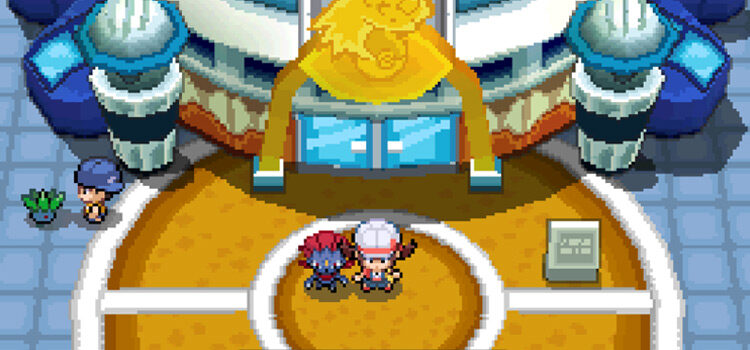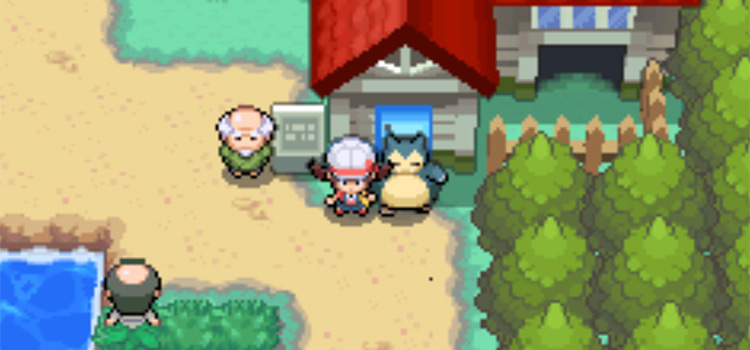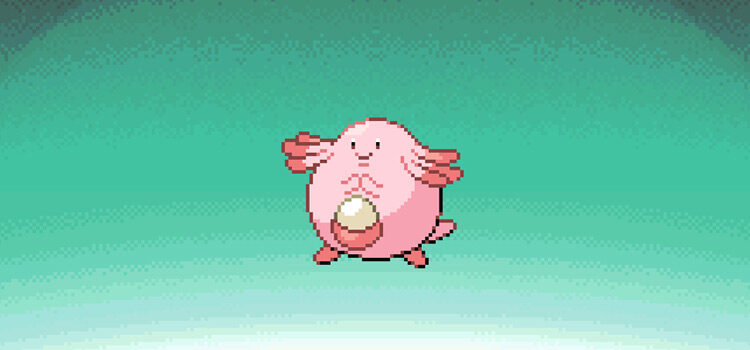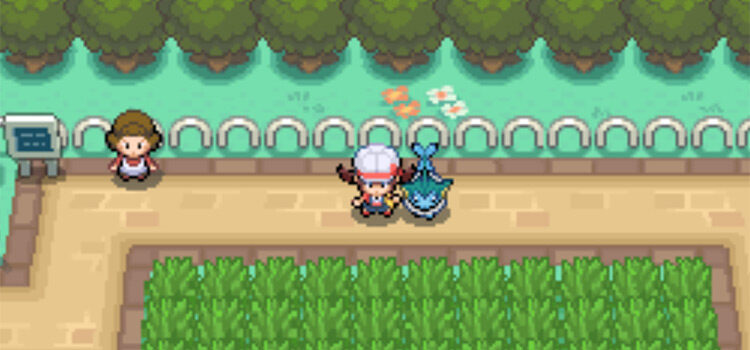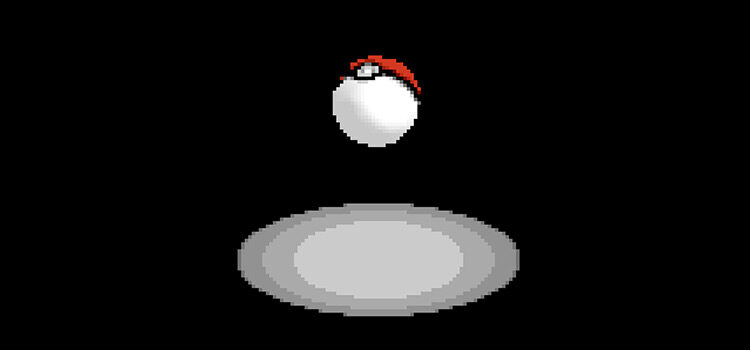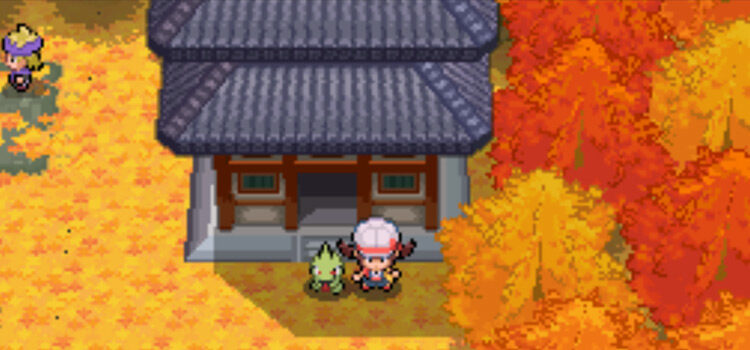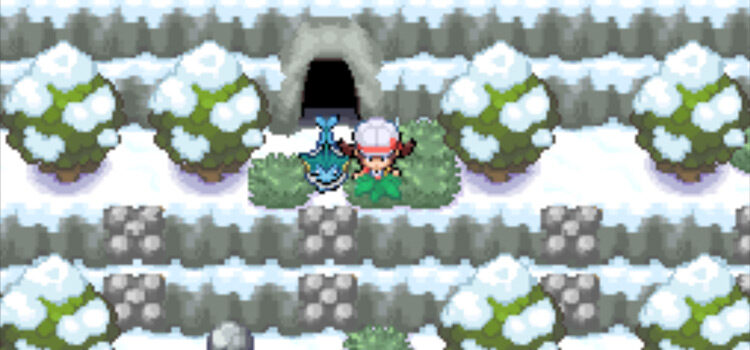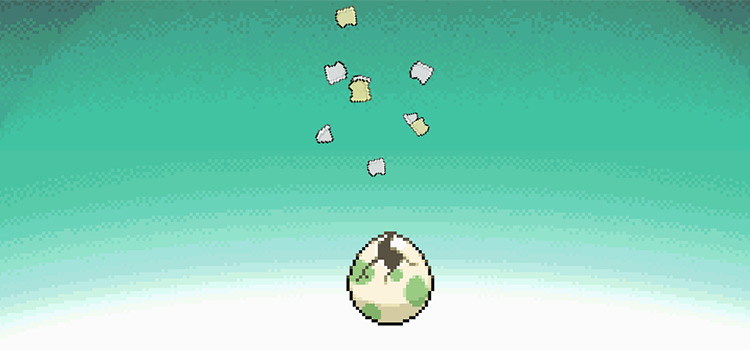
Breeding in Pokémon HeartGold and SoulSilver takes place when you leave two compatible Pokémon at the Daycare and allow them to produce an Egg.
Eggs between compatible Pokémon are only produced when you move around in the overworld through walking, running, or riding your bicycle. It’s not a time-based mechanic, and you won’t be able to receive or hatch an Egg while remaining stationary.
Pokémon are usually compatible for breeding when:
- They are from the same species or Egg Group
- They are of different genders
- They are adult Pokémon
Additionally, the vast majority of Pokémon are compatible to breed with a Ditto, but there are certain Pokémon (such as Mythical, Legendary, and Baby Pokémon) that can’t breed at all, and won’t produce an Egg at the Daycare.
What & Where is the Pokémon Daycare?
The Pokémon Daycare is located on Route 34, below Goldenrod City and north of Ilex Forest.
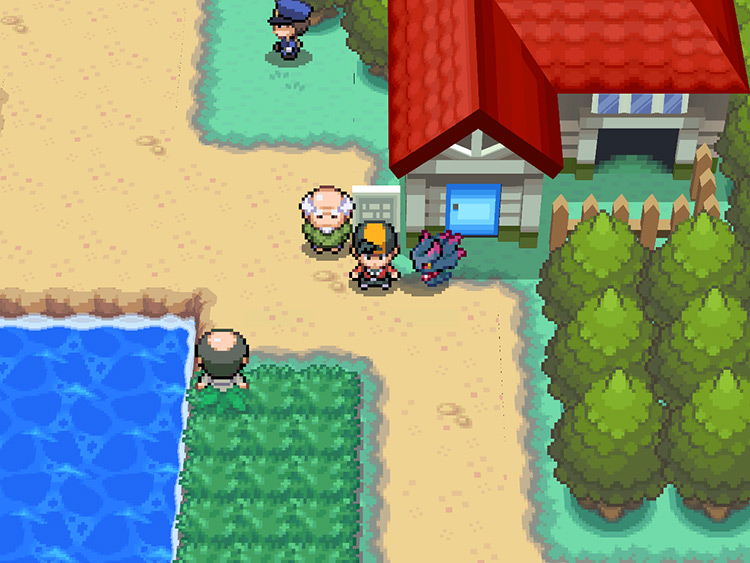
Here are some key takeaways to note about the daycare:
- You can leave up to two Pokémon in the daycare at once. And the Pokémon left there will gain +1 EXP for every step taken in the overworld.
- Leaving Pokémon in the Daycare is free. But taking them back will incur a fee of ₽100 for each Pokémon, plus an additional ₽100 for each level that the Pokémon has gained while you were away.
- Pokémon left in the Daycare will be fully healed. So when they are returned to you, your Pokémon will be in full health. But your Pokémon won’t evolve while staying in the daycare.
- The Daycare could overwrite some of your Pokémon’s moves. When leveling up at the Daycare, Pokémon will learn all the moves that they normally would at varying level. If a certain Pokémon already knows four moves, then the earliest learned move will be forgotten in favor of the new one.
And here’s how breeding works in the daycare:
If two compatible Pokémon are left in the Daycare, they will produce an Egg. You can check the chances of an Egg being produced by talking to the Daycare Man. His dialogue will change based on the likelihood of this happening:
| Chances of an Egg | Dialogue |
|---|---|
| 70% | “The two seem to get along very well.” |
| 50% | “The two seem to get along.” |
| 20% | “The two don’t seem to like each other.” |
| 0% | “The two play with other Pokémon rather than with each other.” |
Breeding Basics: Obtaining & Hatching an Egg
Eggs are obtained from the Daycare Man, right outside the Pokémon Daycare. You’ll need an empty slot in your party to receive an Egg from him.
When you speak to him after leaving two Pokémon with his wife, the Daycare Lady, he will tell you if your Pokémon get along and then offer to give you a call on your Pokegear if they find an Egg.
If you don’t want him to call you, you can also check if he has an Egg by the direction he is facing: if he’s facing the body of water to the left, instead of down to Ilex Forest, then he has an Egg to give you.
An Egg is usually produced by two compatible Pokémon for every 256 steps you take in the overworld.
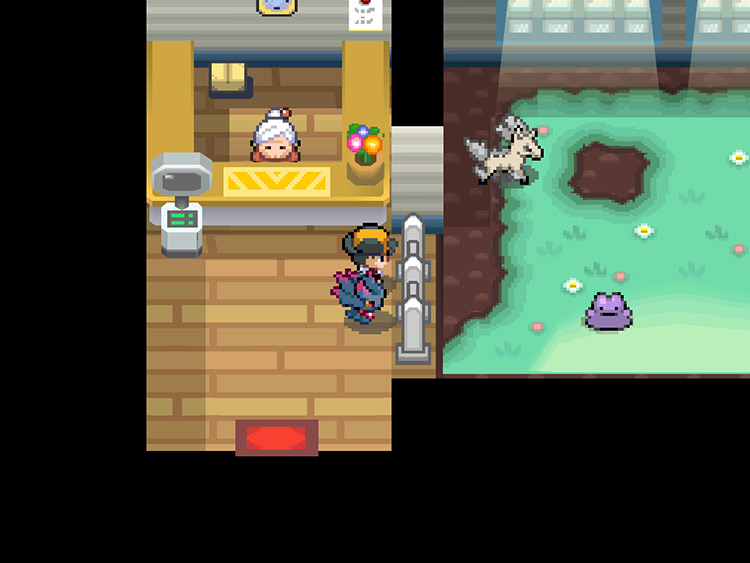
The steps it takes to hatch an Egg depends on the Pokémon inside it, and it can range from about 1,000 to 10,000 steps before an Egg hatches.
Again, this is not a time based mechanic, and Eggs will only be produced and hatched once you’ve walked, run, or ridden your bicycle for the required amount of steps.
Tip: If a Pokémon with either the Flame Body or Magma Armor ability is in your party, the required amount of steps for an Egg to hatch will be halved.
What’s in the Egg?
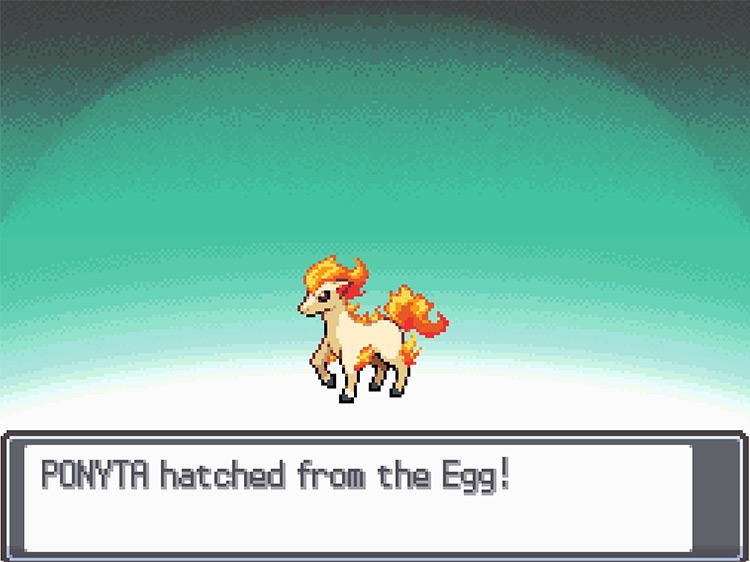
The Pokémon in the Egg will share the lowest base evolutionary form of its mother, and it will hatch as a level 1 Pokémon. If a Ditto is used, the Pokémon will share the lowest base form of the non-Ditto Pokémon.
There are exceptions to this rule.
Nidoran♂ and Nidoran♀, as well as Volbeat and Illumise, may produce offspring from either the male or the female species when bred.
Also, there are certain Baby Pokémon that can only be bred by having their parent hold the corresponding incense:
| Parent | Incense Held | Offspring |
|---|---|---|
| Marill or Azumarill | Sea Incense | Azurill |
| Chansey or Blissey | Luck Incense | Happiny |
| Chimecho | Pure Incense | Chingling |
| Mantine | Wave Incense | Mantyke |
| Mr. Mime | Odd Incense | Mime Jr. |
| Roselia or Roserade | Rose Incense | Budew |
| Snorlax | Full Incense | Munchlax |
| Sudowoodo | Rock Incense | Bonsly |
| Wobbuffet | Lax Incense | Wynaut |
But the main goal of many Trainers is to breed Pokémon that share the moves, Natures, and IVs of the parent Pokémon.
Natures
A Pokémon’s Nature has to do with its Base Stats (the stats that are unique to each species of Pokémon). Base Stats are different from IVs in that they are not hidden values.
A Nature usually increases a certain stat, while decreasing another.
This effect on the Pokémon’s stats is easily identifiable. The Pokémon’s strongest and weakest stats will be slightly highlighted in the Skills tab in their Summary Menu. The stats in red indicate an increased stat, while the stats in blue indicate a decreased stat.
The Bashful, Docile, Hardy, Serious, and Quirky Natures do not alter any stats.
Tip: In breeding, if one Pokémon is holding an Everstone, the chances of that Pokémon’s Nature passing down to its offspring is increased.
Moves and Egg Moves
When a Pokémon hatches from an Egg, it will ordinarily know any moves it learns at level 1.
Additionally, if both parents know a move that the offspring can learn through leveling up in its current form, then the hatched Pokémon will know this move too.
There is also something known as Egg Moves, which are moves that can’t normally be learned by a certain Pokémon, but which can be inherited from their parents.
Egg Moves that are known by the father will likely be passed down to the hatched Pokémon. For example, by breeding a female Rapidash with a male Espeon that knows the move Morning Sun, the resulting Ponyta will also know this move.
In HeartGold and SoulSilver, compatible TMs and HMs known by the father could also be inherited.
Note: Poké Balls and Abilities can’t be inherited in HeartGold and SoulSilver. Hatched Pokémon will be contained within the standard Poké Ball, and an appropriate Ability will be randomly assigned.
What are IVs?
IVs (Individual Values) are hidden values that can’t be altered once they’re set. IVs are set when a Pokémon is caught or hatched.
Each of a Pokémon’s six stats (Attack, Defense, HP, Special Attack, Special Defense, and Speed) has a corresponding IV, and each IV has a range of 0-31 (with 31 being the best).
Up to three IVs can be inherited from a hatched Pokémon’s parents. These are usually selected at random, but can be influenced by the use of Power Items.
| Power Item Held | Inherited IV |
|---|---|
| Power Anklet | Speed |
| Power Band | Special Defense |
| Power Belt | Defense |
| Power Bracer | Attack |
| Power Lens | Special Attack |
| Power Weight | HP |
If you give a Pokémon one of the Power Items to hold when it breeds, the resulting offspring will inherit that Pokémon’s corresponding IV. For example, a female Gardevoir with a high Special Attack IV, holding the Power Lens, will be able to breed a Ralts with the same IV.
Power Items can be given to both parents, which would usually result in two IVs being inherited by the offspring.
Tip: It’s nearly impossible to get a single Pokémon with all of its IVs maxed out. So for competitive play, it’s best to focus on the role of the Pokémon and the IVs that would prove most beneficial.
While there are no ways to see IVs in-game, there are ways to identify a Pokémon’s best overall IVs, as well as their strongest and weakest IVs.
How Do You Check IVs?

In HeartGold and SoulSilver, there are two ways to infer the status of a Pokémon’s IVs: Characteristics and The IV Judge at the Battle Tower.
A Pokémon’s Characteristic can be found in the Trainer Memo tab when viewing its Summary.
The Characteristic of a Pokémon indicates which of its stats contains the highest IV:
| All Characteristics & Corresponding IVs | |||||
|---|---|---|---|---|---|
| Attack | Defense | HP | Special Attack | Special Defense | Speed |
| Proud of its power | Sturdy body | Loves to eat | Highly curious | Strong willed | Likes to run |
| Likes to thrash about | Capable of taking hits | Often dozes off | Mischievous | Somewhat vain | Alert to sounds |
| A little quick tempered | Highly persistent | Often scatters things | Thoroughly cunning | Strongly defiant | Impetuous and silly |
| Likes to fight | Good endurance | Scatters things often | Often lost in thought | Hates to lose | Somewhat of a clown |
| Quick tempered | Good perseverance | Likes to relax | Very finicky | Somewhat stubborn | Quick to flee |
A Pokémon’s Nature can also be identified here.
For a more detailed analysis of a Pokémon’s IVs, there is The Judge NPC, located near the PC in the Battle Tower at the Battle Frontier.

He will give you IV information on a Pokémon in your party, specifically the range of the entirety of the Pokémon’s IVs, as well as the range of the highest IV.
The Judge’s dialogue will change based on the range of the combined IVs:
| IV Judge Phrases (Combined IVs) | |
|---|---|
| Dialogue | Range of the Pokémon’s IVs |
| “This Pokémon’s potential is decent all around.” | 0-90 |
| “This Pokémon’s potential is above average overall.” | 91-120 |
| “This Pokémon has relatively superior potential overall.” | 121-150 |
| “This Pokémon has outstanding potential overall.” | 151-186 |
He will also tell you the range of your Pokémon’s highest IV:
| IV Judge Phrases (Highest Stat IV) | |
|---|---|
| Dialogue | Range of Highest IV |
| “It’s rather decent in that regard.” | 0-15 |
| “It’s very good in that regard.” | 16-25 |
| “It’s fantastic in that regard.” | 26-30 |
| “It can’t be better in that regard.” | 31 |
Tip: EVs (Effort Values) also exist for each Pokémon, but they are not inherited through breeding and can be altered.
Pokémon Breeding Compatibility
How Egg Groups Work
It’s important to understand that Pokémon left at the Daycare won’t breed if they are from different Egg Groups.
They need to share an Egg Group to be compatible (with the exception of Ditto).
Note: Egg Groups are different from Pokémon Types. Two fire-type Pokémon belonging to different Egg Groups won’t be compatible to breed.
Pokémon can belong to up to two different Egg Groups. Below is a list of every grouping in HG/SS.
| List of All Egg Groups | |
|---|---|
| Bug | Ditto |
| Dragon | Fairy |
| Field | Flying |
| Grass | Human-like |
| Amorphous | Mineral |
| Monster | Water 1 |
| Water 2 | Water 3 |
| No Eggs | Gender Unknown |
Pokémon belonging to the “No Eggs” Egg Group can’t breed, even with a Ditto. This Egg Group includes all of the Mythical, Legendary, and Baby Pokémon.
Many Pokémon in the “No Eggs” Egg Group also belong to the Gender Unknown Egg Group, but some Gender Unknown Pokémon, such as Staryu, can still breed with a Ditto.
Breeding with a Ditto
Ditto has become a key Pokémon for Trainers looking to breed, since it’s capable of breeding with any Egg Group (with the exception of its own and the No Eggs Egg Group).
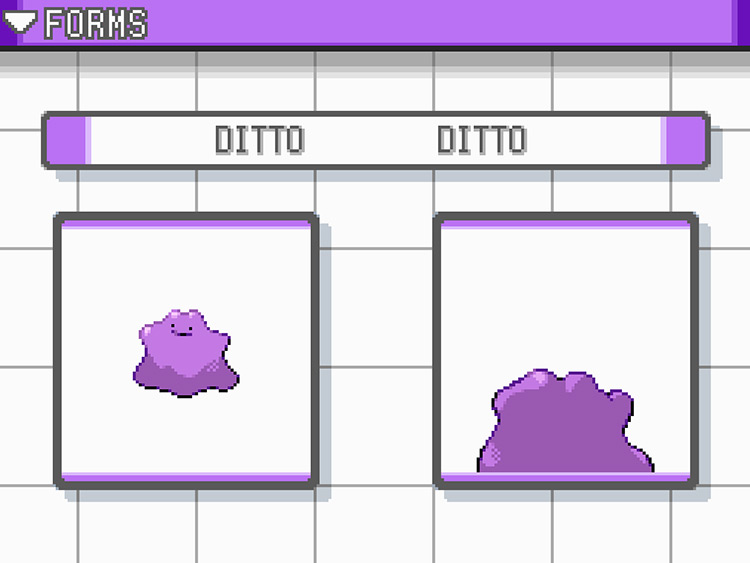
Some key points about breeding with Ditto:
- You can breed any Pokémon with any Ditto. Any Pokémon that is capable of breeding a baby can breed with Ditto (with the exception of Ditto itself), and the resulting Pokémon will always take after the non-Ditto parent.
- Ditto can never be bred or hatched from an egg. If you want more Dittos they must be gifted, caught, or traded.
- Dittos from different-region games are perfect for breeding shinies. A Ditto that has a different language of origin from the Pokémon you breed it with increases the odds of you hatching a Shiny Pokémon.
Quick Tip: Breeding Shiny Pokémon
Many Trainers turn to breeding in the hopes of hatching a Shiny Pokémon faster than finding one in the wild.
Shiny Pokémon are rare, differently colored variants of standard Pokémon.
In Pokémon breeding, there is what is called the Masuda method, which involves breeding two compatible Pokémon from different linguistic game origins to increase the odds of obtaining a Shiny.
- The base rate of encountering a Shiny Pokémon through breeding is about 1/8192
- By utilizing the Masuda method, the rate increases to 5/8192
-
Pokémon HGSS
- Pokémon HG/SS Complete Breeding Guide + Tips


